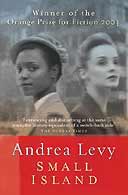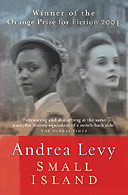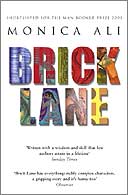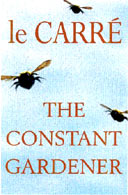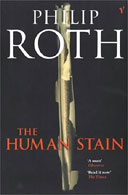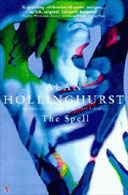Small Island is a novel divided up in two different ways. First, the narrative is portioned out between its four main characters. Second, it is separated - after a brief prologue - into two time zones. Each of the nine main sections of the novel is labelled either "1948" or "Before", and we shift back and forth between these two times. In 1948, in a large, shabby lodging house in grey, postwar London, four ill-sorted characters confront each other. Bernard and Queenie own the house; Gilbert and Hortense, newly arrived from Jamaica, live in one of its rooms. The novel gradually unfolds the accidents that have brought them together.
The unusual chronological structure is integral to Levy's approach to history. The key date, 1948, is the year when the Empire Windrush brings hopeful West Indian immigrants to England. Among them is Gilbert Joseph, one of the narrators. In recreating the wintry England that he discovers, this is a conventional historical novel. But it is historical in another way, for we keep being shifted back from this time to see each character's past. The effect is melancholy. As the four narrators tell their stories, they look back on mostly cheated expectations. Queenie learned elocution and alluring feminine wiles, but found herself married to the utterly dull Bernard. Gilbert imagined himself as an RAF pilot, but served as a driver in different cheerless parts of England. Everywhere he encountered the small-mindedness of his adopted small island.
The war years are relived in personal recollections, cleverly transforming the author's historical research into rueful anecdote. Everything comes to a crisis in 1948 when, in the novel's last section, Queenie gives birth to a son. It cannot be Bernard's child. "This ignorant man was not even wise to what was ailing his wife," says Hortense, as she tells how Queenie locked him out of the room as she went into labour. But we were not wise to it either. Swaddling herself to disguise her bump, Queenie has kept remote from the reader as well as from the other characters. When her contractions begin, we are initially as mystified as her foolish husband.
There is a good literary tradition of novels turning on a woman giving birth after successfully hiding her pregnancy from all the other characters. Both Walter Scott's The Heart of Midlothian and George Eliot's Adam Bede require us to credit this unlikely act of concealment. In these novels the babies of, respectively, Effie Deans and Hettie Sorrel are illegitimate and appear to doom their unmarried mothers. In Small Island , Queenie is respectably married - but her baby is black. This is the final and fitting shock for a husband who grumbles unrestrainedly about "wogs" and "darkies". The shock is arranged for us too. We have known, through one of the "Before" sections, that Queenie enjoyed a night of passion with a black airman, Michael, some time in 1944. But he left early in the morning to return to his squadron and she was hospitalised by a flying bomb the next day.
Queenie's deception of Bernard is explicable. He has returned to England after traumatic wartime service in the Far East, lived in Brighton for two years, and then suddenly turned up to reclaim his wife and home. He has been back for only seven months and we are told quite explicitly that his wife has insisted they sleep in separate rooms. But Levy can only surprise her reader by a twist of her back-and-forth chronology. In the last "1948" section, Queenie tells us that Michael, who has been thought lost in action, in fact survived being shot down over France. A couple of years after the war's end he turned up at her door, in London for a few days while he waited for the ship on which he would emigrate to Canada. "Three days and three nights he stayed with me." Then he left for his new life. "I knew I was pregnant."
So though Levy keeps her narrators looking back to what has gone "Before", she makes sure that this crucial information is withheld. Readers and characters alike must suddenly be confronted with the consequences of past passions and prejudices. To make an affecting ending from all her history she must keep some history hidden.
· John Mullan is senior lecturer in English at University College London. Read his archived pieces and respond to them at theguardian.com/books or email books@theguardian.com
